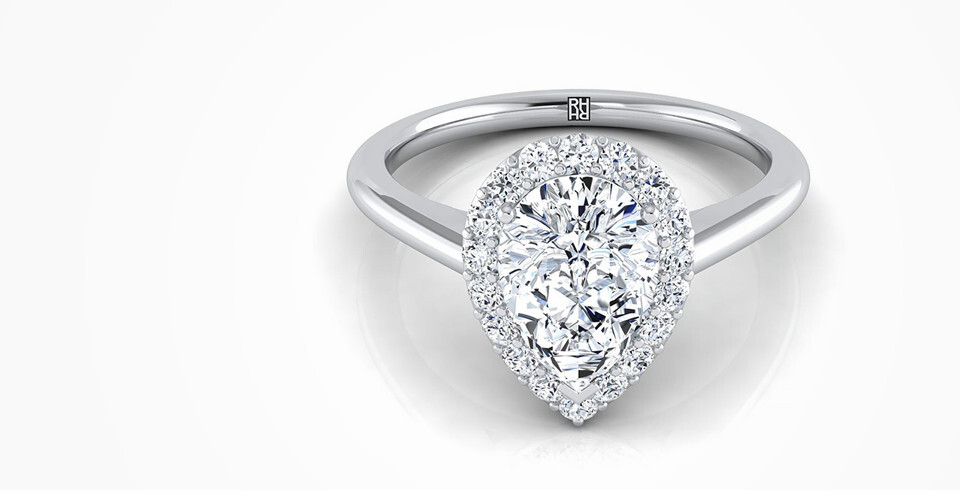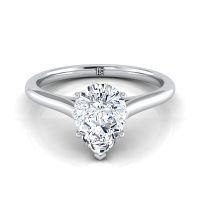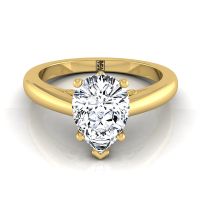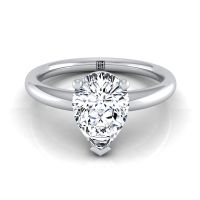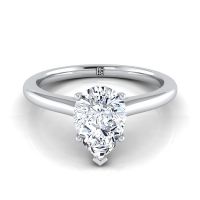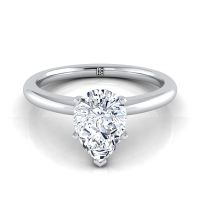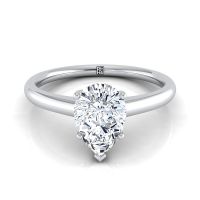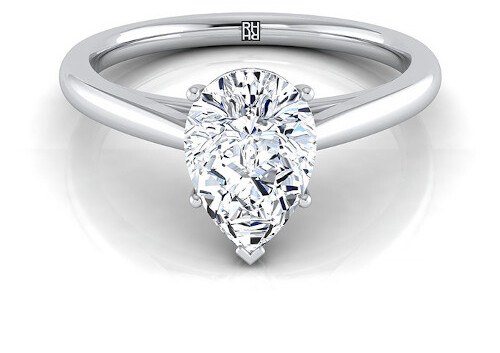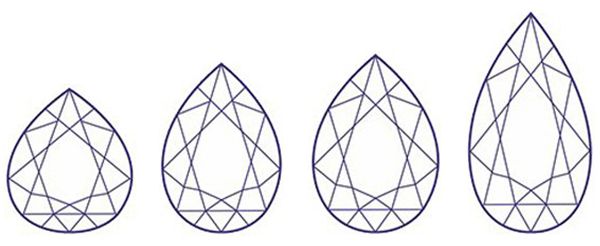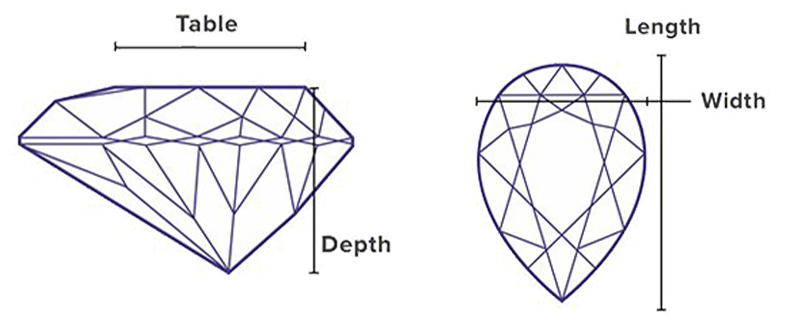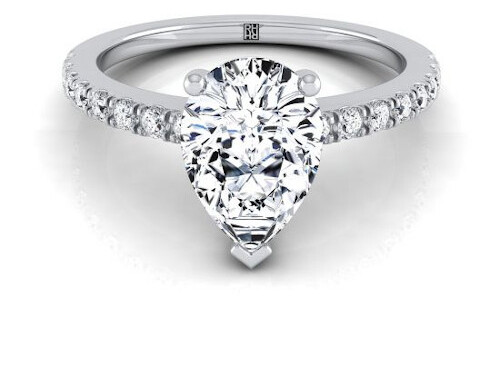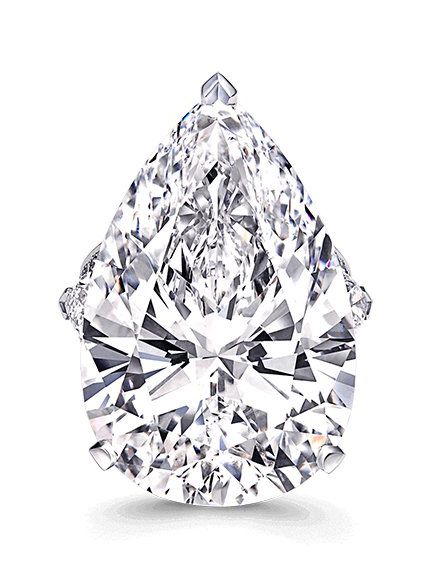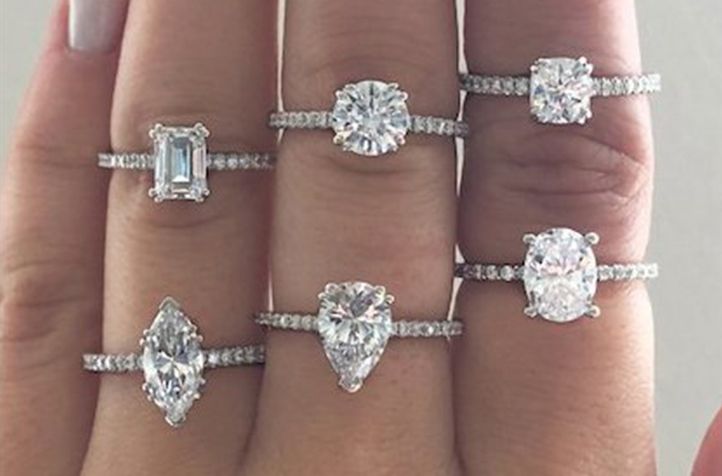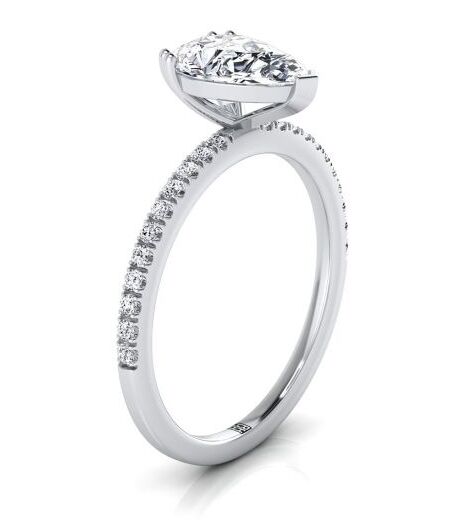Ready to pick a pear? Here’s what you need to know about shopping for pear shape diamonds. Because pear diamonds are less common than round brilliants, many retailers won’t have any in stock. You are much better off buying fancy shapes like this online because you’ll have a much better selection in your target color, clarity and carat weight so you can assess the shape and cut quality and pick a really beautiful diamond that’s a good value too.
It’s important to rely only on diamond grading reports from GIA or AGS, the world’s most respected diamond grading laboratories. You can’t rely on the grades from other labs to be equivalent.
When you are shopping for pear shaped diamonds, the first factor that you’ll want to consider is the length to width ratio: a comparison of how round or elongated the pear shape is. A ratio of 1 would be round and a ratio of 2.0 would be longer and skinnier. Which you like best is a matter of personal taste but most people prefer something in the middle. Look for a smooth outline, without any egg-like bulges that conceal extra weight.










